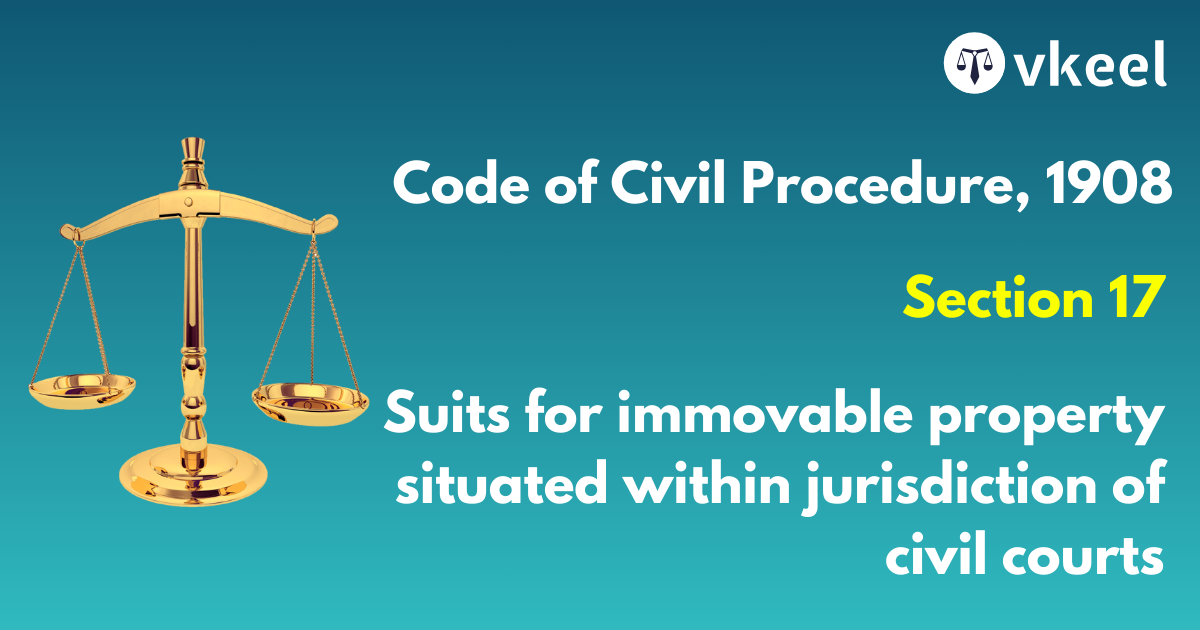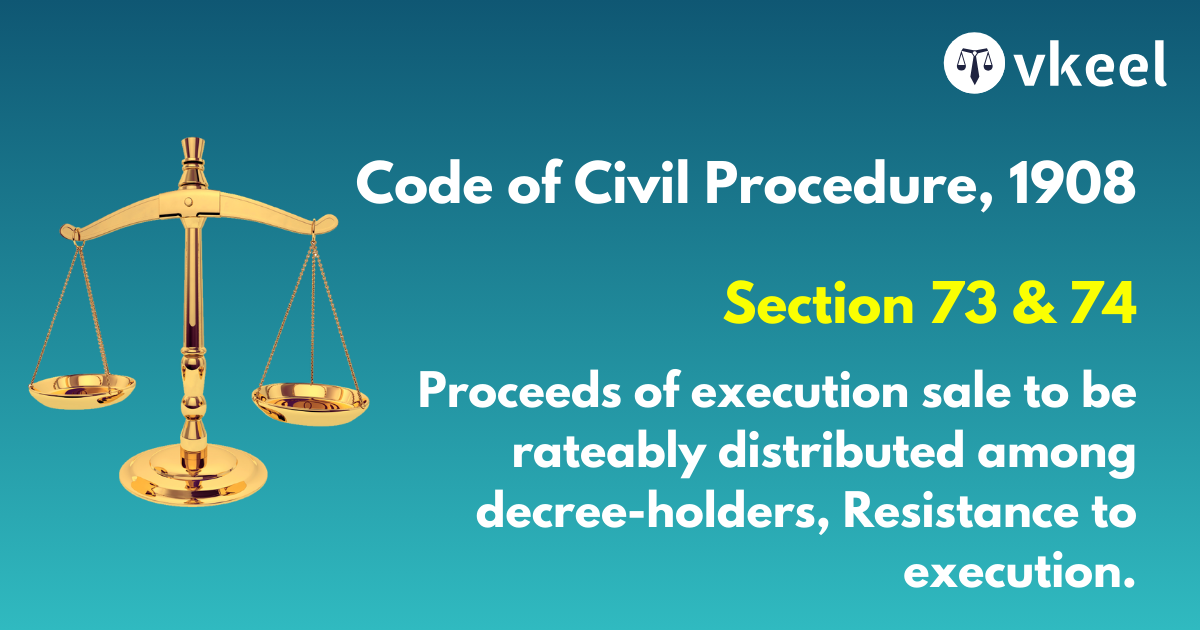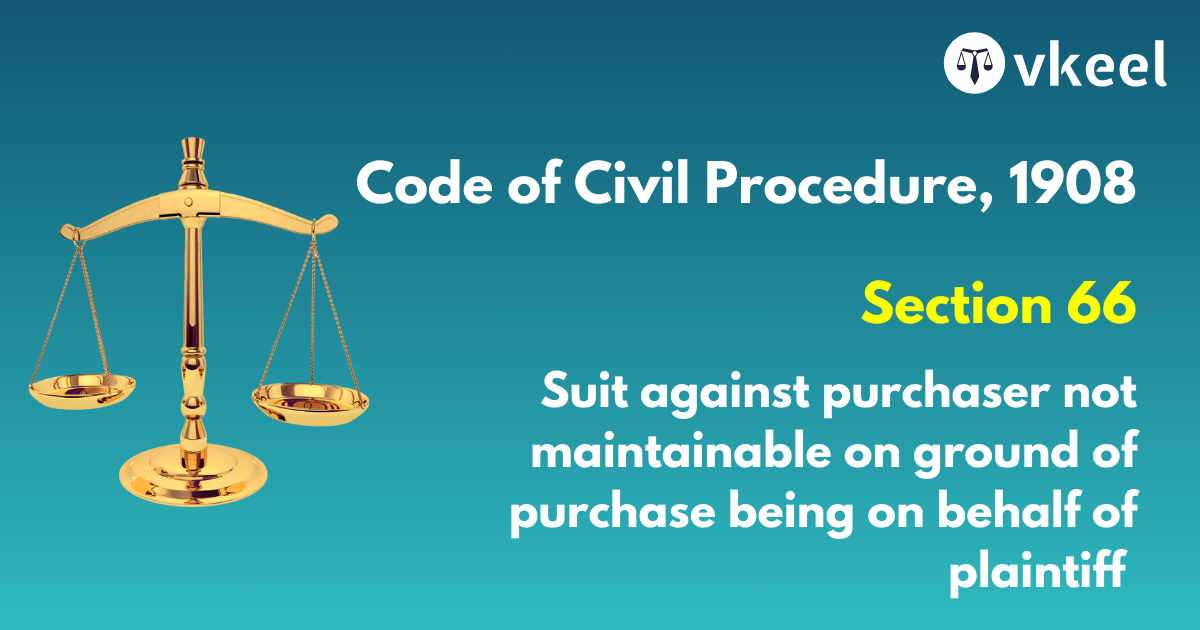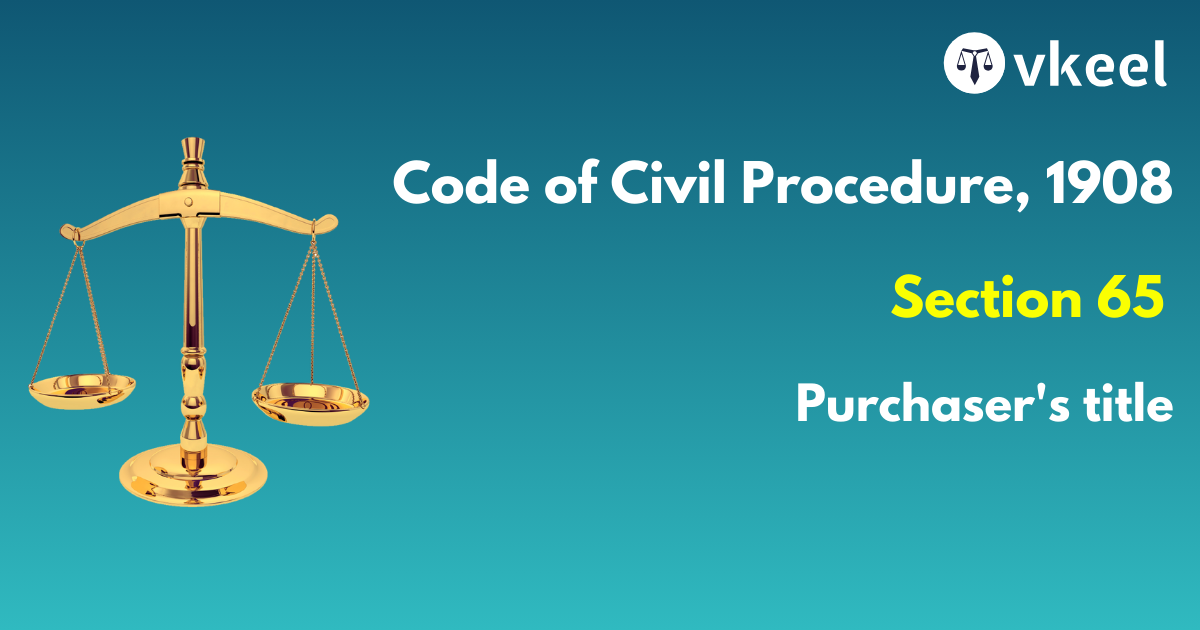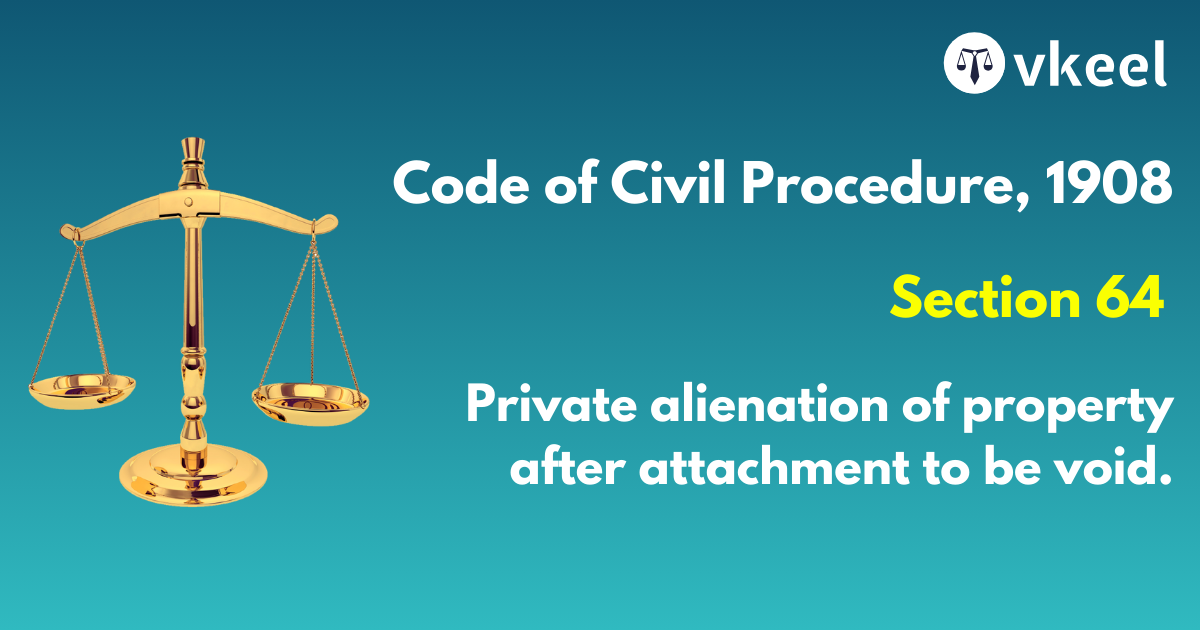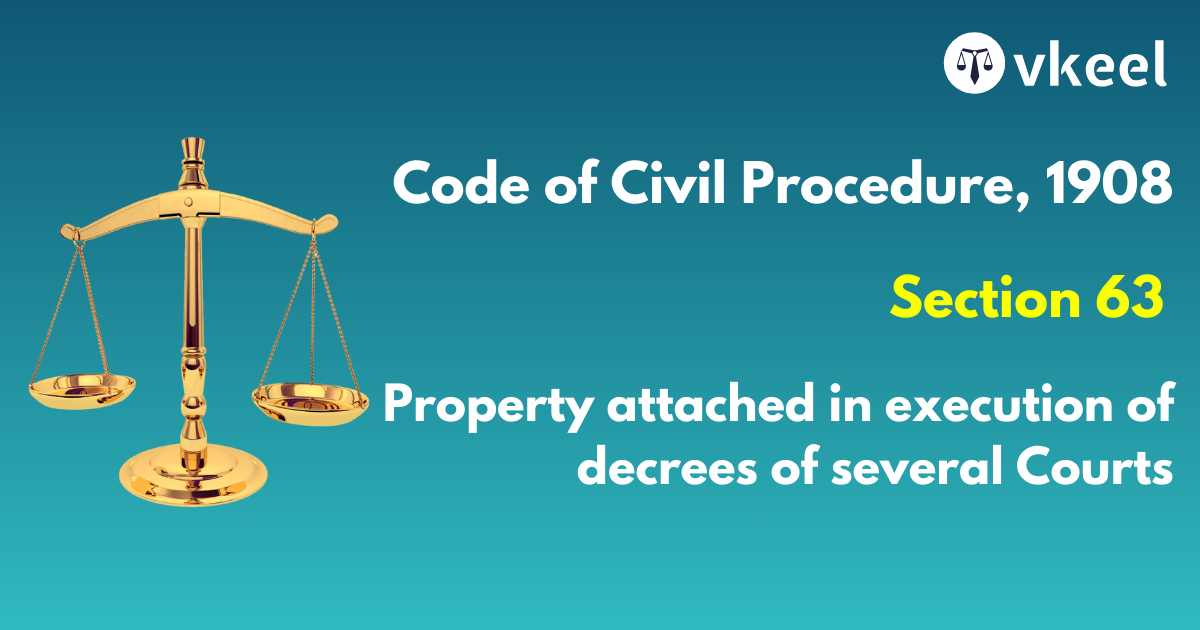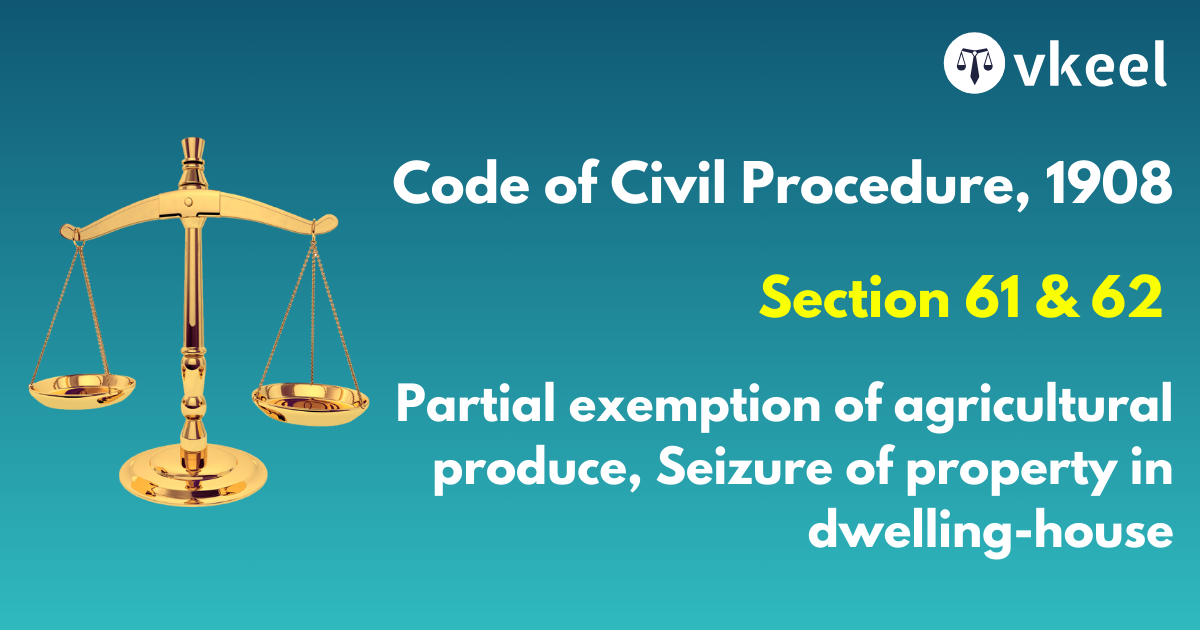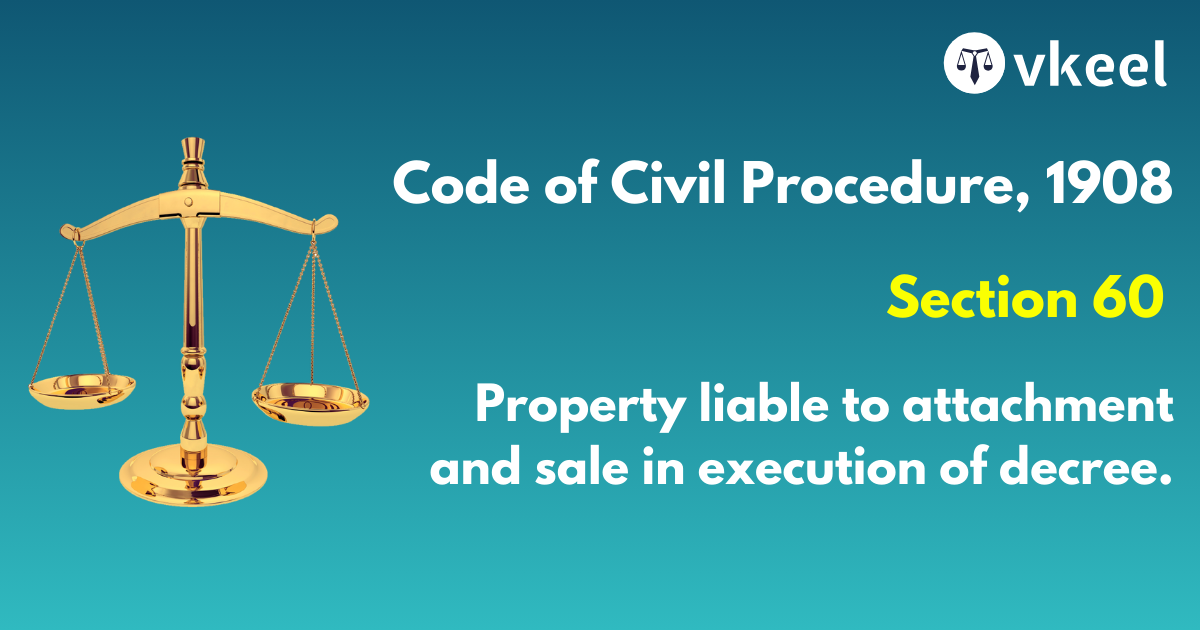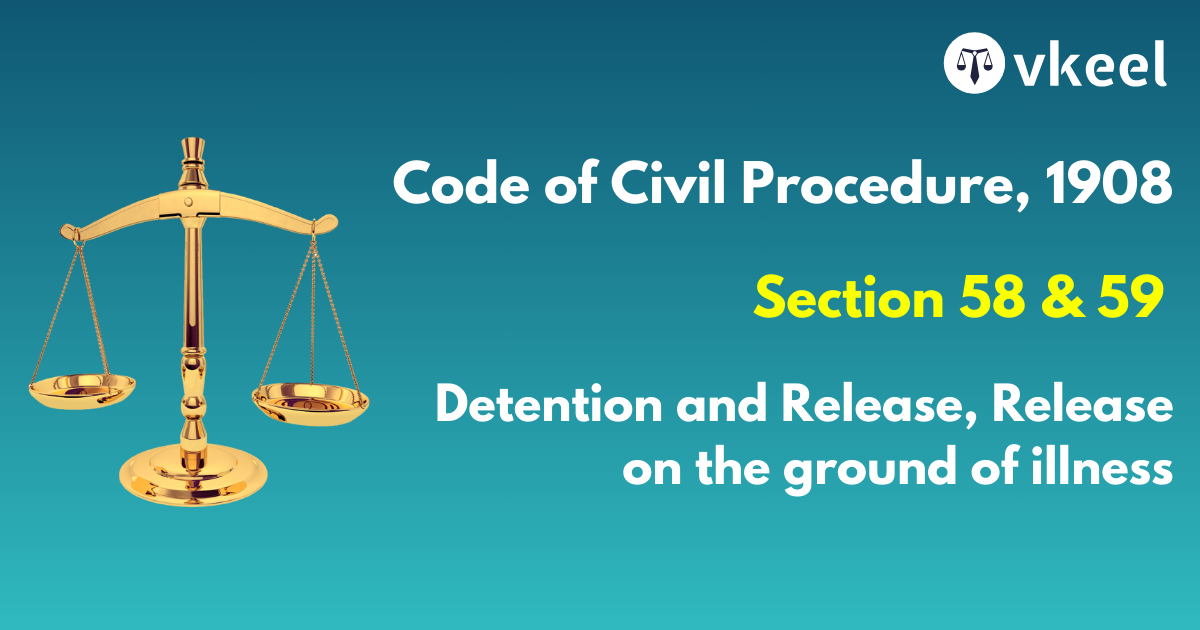Section 17 Code of Civil Procedure,1908 – Suits for immovable property situate within jurisdiction of different Courts
By Joy Puri
Table of Contents
Introduction
The primary object of the antecedent provision is to prevent the multiplicity of the suits in the country. Albeit the provision doesn’t apply when the cause of action with respect to the properties claimed in the suit is not the same.
The judiciary in its pronouncements has also taken the view that the choice of courts entailed in provision of the section 17 can only be applied in the cases in which both the courts in question are covered within the applicable limits of the code.
Section 17 of the Code of Civil Procedure, 1908
17. Suits for immovable property situate within jurisdiction of different Courts— Where a suit is to obtain relief respecting, or compensation for wrong to, immovable property situate within the jurisdiction of different Court, the suit my be instituted in any Court within the local limits of whose jurisdiction any portion of the property is situate :
Provided that, in respect of the value of the subject matter of the suit, the entire claim is cognizable by such Court.
Scope of the Provision
The antecedent provision of the Code of Civil Procedure provides the right to the plaintiff for suing the defendant on a certain cause of action and to choose one out of several courts of law which are available for the plaintiff.
The provision further entails that if there exists a situation, wherein there is a dispute over the jurisdiction, the choice to choose the forum lies with the plaintiff of the respective suit.
Therefore, the basic pillar of the provision stands on the legal maxim of dominus litis which means the one who is the master of having a dominion over something. The provision confers the plaintiff to control the action thereof.
Further the scope of the provision outlines that the provision is not applicable to the suits for injunctions and to the suits regarding the wrongs committed outside India.
Landmark Case Laws
Karam v Kunwar, 1942
In order that section 17 may apply there must be one property which is situated in different jurisdiction, ie it must be a single estate which the parties are claiming as a whole. If the owner has a claim against unconnected trespassers upon different parts of the estate or different properties situated within it, section 17 would not apply.
Satya v Radha
The phrase “relief respecting…….immovable property” does not include suits relating to immovable property of a nature different from suits specified in clauses (a) to (e) of section 16.
Dhannalal Vs Kalawatibai, 2002
Reference may also be had to Section 17 of CPC which provides that where a suit is to obtain relief respecting immoveable property situate within the jurisdiction of different Courts, the suit may be instituted in any Court within the local limits of whose jurisdiction any portion of the property is situated; provided that, in respect of the value of the subject-matter of the suit, the entire claim is cognizable by such Court. The provision confers right on plaintiff suing on consolidate cause of action to choose one out of several fora available to him and it is his convenience and sweet will which will prevail. The provision is not an answer to the problem posed in the present case; nevertheless, the principle underlying thereunder can be read out and pressed in service.
Nrisingha Charan Nandy Choudhry Vs. Rajniti Prasad Singh and Ors. AIR 1936 PC 189
Their Lordships referred to Section 17 of the CPC and termed it as the ordinary rule for determining the Court which can take cognizance of a suit for immoveable property situated within the local limits of two or more tribunals.
Shivnarayan Vs Maniklal, 2019
The word “property” under Section 17 of the Civil Procedure code may also be properties, hence, in a schedule of plaint, more than one property can be included. Section 17 can be applied in event there are several properties, one or more of which may be located in different jurisdiction of courts. The word “portion of the property” occurring in Section 17 has to be understood in context of more than one property also, meaning thereby one property out of a lot of several properties can be treated as portion of the property as occurring in Section 17. Thus, interpretation of word “portion of the property” cannot only be understood in a limited and restrictive sense of being portion of one property situated in jurisdiction of two courts.
Conclusion
Thereby from the reading of the aforesaid it can be concluded that the aforementioned section is only permissive by its very nature.
The main motive of the above entailed provision is to avoid the plurality of the suits in the country.
Disclaimer:
The information provided in the article is for general informational purposes only, and is not intended to constitute legal advice or to be relied upon as a substitute for legal advice. Furthermore, any information contained in the article is not guaranteed to be current, complete or accurate. If you require legal advice or representation, you should contact an attorney or law firm directly. We are not responsible for any damages resulting from any reliance on the content of this website.

